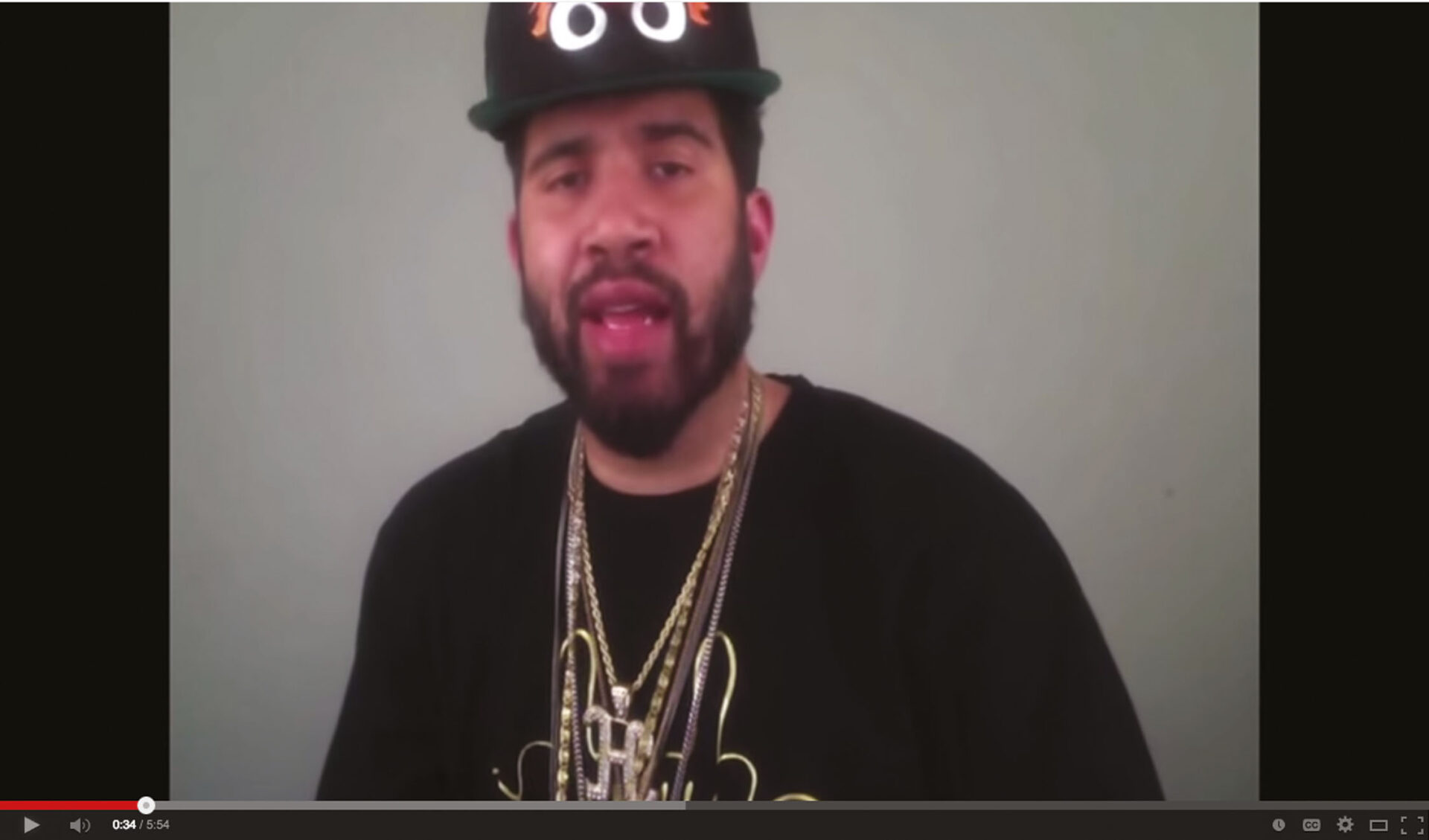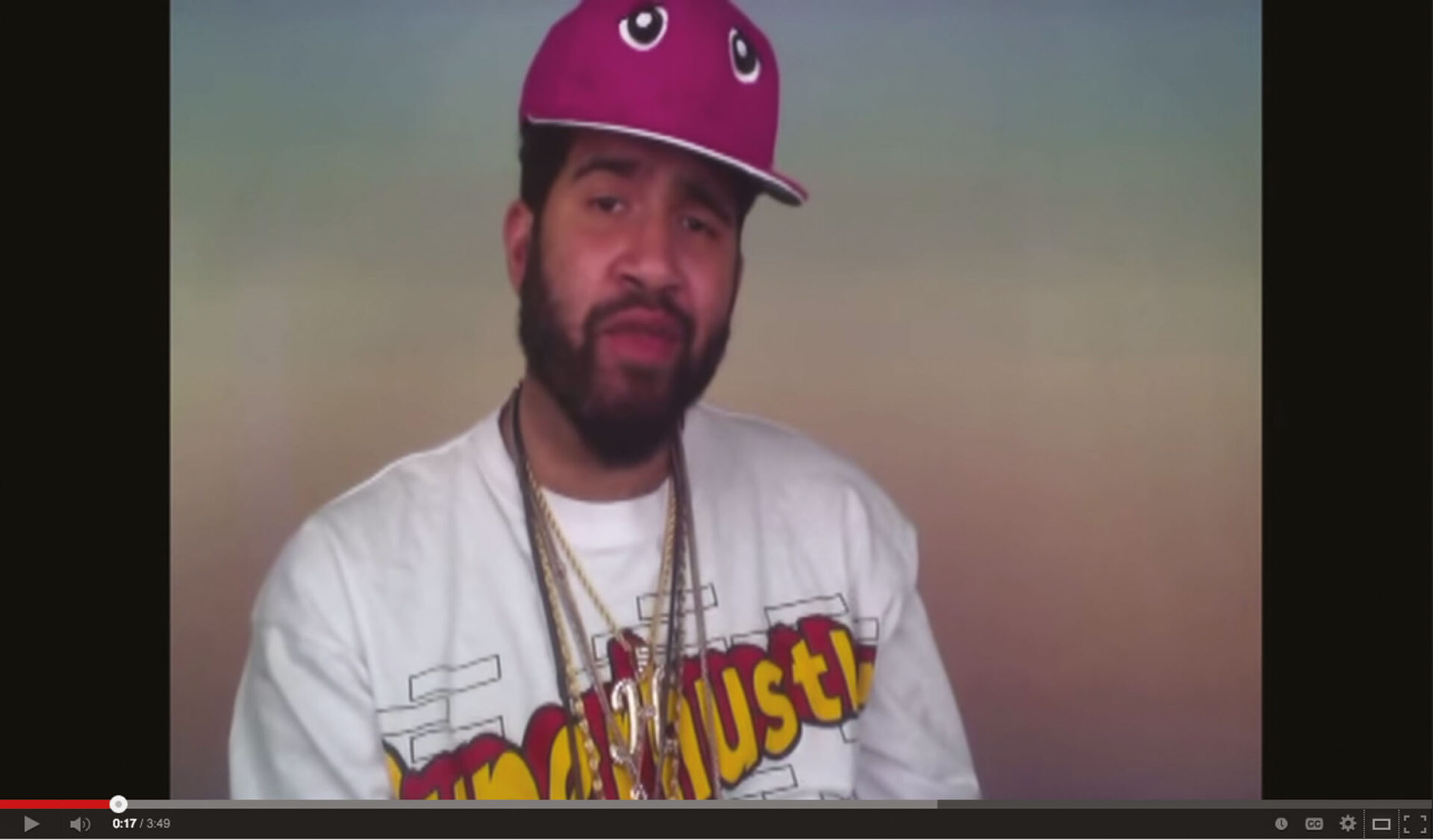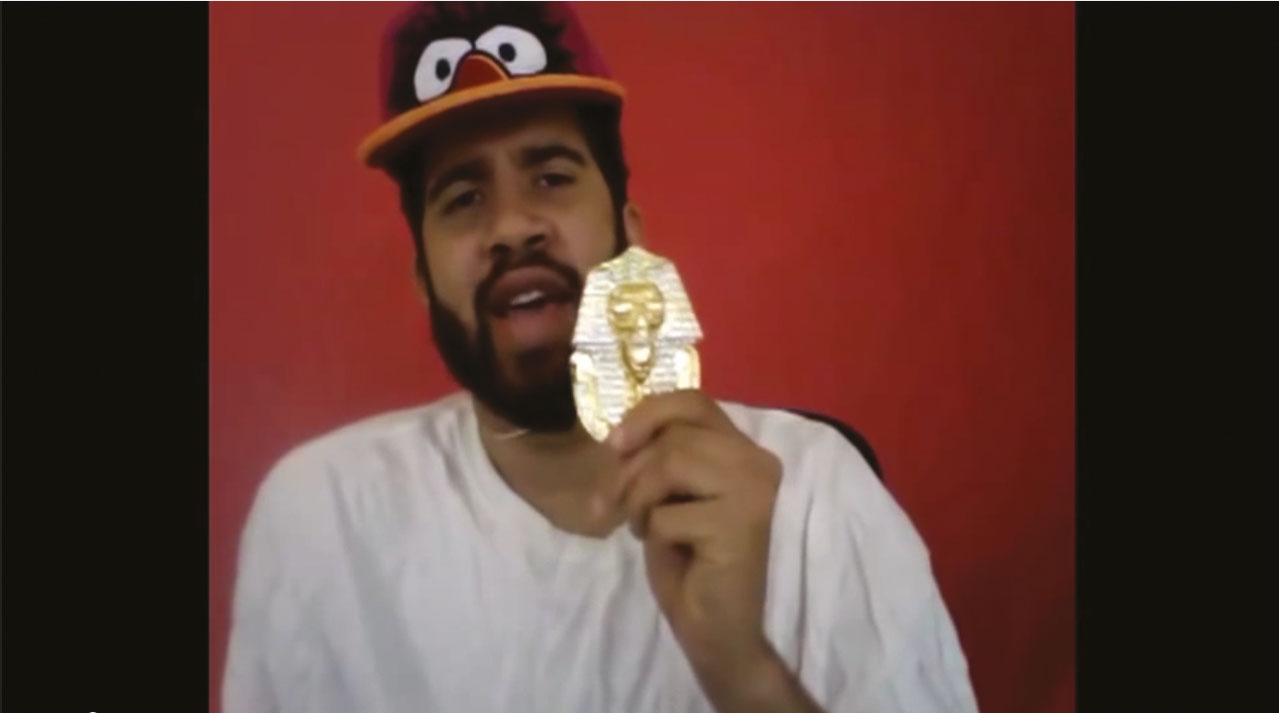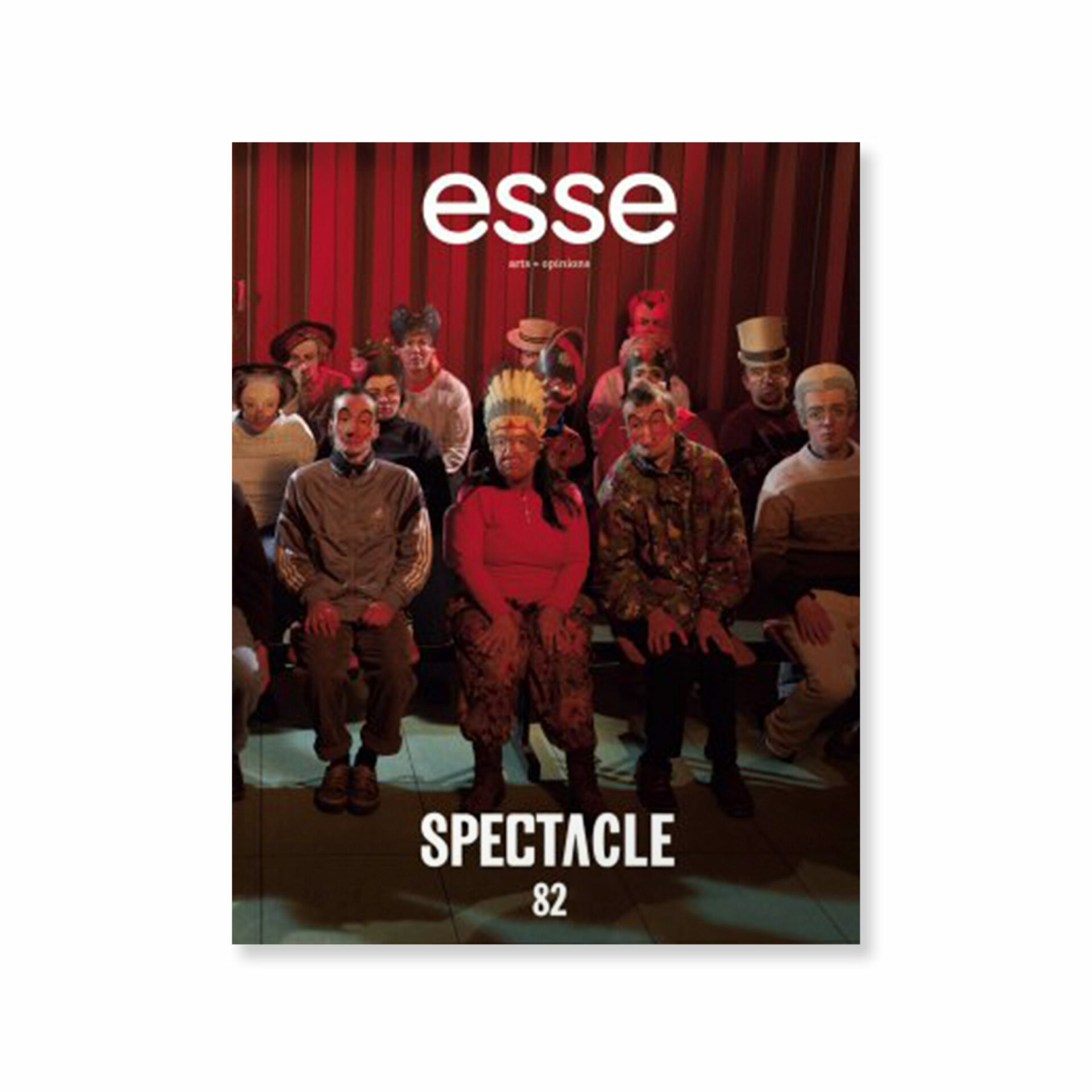
Hennessy Youngman aka “The Pharaoh Hennessy” aka “The Pedagogic Pimp,” as he calls himself, spits various criticisms on the state of art for his YouTube channel in an urban drawl and thug-slang vernacular. Though he has “gone viral,” so to speak, Youngman is certainly not confined to art world status and celebrity. His popular video series Art Thoughtz has become something of an online sensation, amassing well over 1,350,000 viewers and 11,500 loyal subscribers. It should come as no surprise, then, that Youngman may be one of the most popular art critics in recent memory with respect to audience. Hence, a considerable shift is taking place, whereby user-generated internet media are generating alternative forms of art criticism.
Hennessy Youngman is a character invented by Brooklyn-based artist Jayson Musson, who derived the name from Henny Youngman, the English-born “one-liner” comedian, and the cognac stereotypically associated with a generation of hip-hop artists. Musson first conceived the Youngman character in 2010, during his first semester in the MFA program at the University of Pennsylvania, for the purpose of a stand-up comedy routine in the vein of Def Comedy Jam. Soon after, Musson introduced Youngman to the online participatory community of YouTube as a way to reach a wider audience. Though the Art Thoughtz series is an exercise in dramaturgy, it is also a practice based both critically and comedically in art criticism; follow Youngman’s eyes in his videos and you will see that he is reading off the page. Musson strictly adheres to art criticism’s preferred mode of discourse — writing — yet it is the activation of his writing through the performance of Youngman that makes it so radical.
In recent years, art criticism has itself arrived at a well-documented,1 1 - See, for example, Benjamin Buchloh, et al. “Round Table: The Present Conditions of Art Criticism,” October 100 (Spring 2002): 200 – 228; James Elkins, What Happened to Art Criticism? (Chicago: Prickly Paradigm Press, 2003); Gavin Butt, ed., After Criticism: New Responses to Art and Performance (Oxford: Blackwell Publishing, 2005); R. Rubinstein, ed., Critical Mess: Art Critics on the State of their Practice (Stockbridge: Hard Press Editions, 2006); James Elkins and Michael Newman, eds., The State of Art Criticism, (New York: Routledge, 2008); Earl Miller, “The State of Art Criticism and Critical Theory,” C Magazine 100 (Winter 2008): 35 – 7; JJ Charlesworth, “Criticism v Critique,” Art Monthly 346 (May 2011), http://blog.jjcharlesworth.com/2011/08/05/criticism-v-critique/. systemic impasse of sorts. The “crisis of criticism,” as it is now widely known, represents a cosmology of ontological anxieties, yet finds common ground in two areas.

captures vidéos | video stills, 2012.
photos : permission de l’artiste | courtesy of the artist

On the one hand, art criticism as a regulated, standardized discipline in the early twenty-first century is virtually non-existent, and therefore training as an art critic has followed a similar fate.2 2 - James Elkins, What Happened to Art Criticism? (Chicago: Prickly Paradigm Press, 2003), 8. In short, the utilization of descriptive text and the lack of judgment against aesthetic value or usefulness has become symptomatic and everything but rigorous. According to a 2002 study of two hundred and thirty art critics in U.S. national daily and weekly titles, the least popular operation of art writing was judgment while the most popular was description.3 3 - Sally O’Reilly, “On Criticism,” Art Monthly 296 (May 2006), accessed August 25, 2013; www.artmonthly.co.uk/magazine/site/article/on-criticism-by-sally-oreilly-may-2006. That being said, as writers, “we are unused to criticism of our criticism,”4 4 - Ibid. and this may well be where many of the methodological problems lie.
On the other hand, the art market has become the bedfellow of economic and institutional pursuits. The plague of low-paying freelance writing gigs has led some of our best critics into the halls of academia, where they are then subjected to the pressures of “publish or perish” in scholarly journals that have few readers;5 5 - Miller, “State of Art Criticism,” 35 – 77. yet, bizarrely enough, regular contributions to art magazines, critical websites, or exhibition catalogues with larger readership bases are deemed academically “insignificant”; consequently, their voices (and cries!) have been lost. To this end, the unbridled rise of the curator as “art star”6 6 - Ibid., 36. has replaced the cultural significance and political autonomy of critic by lessening his or her power to shape and define aesthetic merit. Since the early 1990s, the curator’s mere selection of work for an exhibition has been enough to imbue an artist with value, which contrasts sharply against a time when artists were made valuable because an art critic advocated, defended, or resuscitated their work.
Art Thoughtz differs from traditional art; it is criticism by self-publication, criticism online through user-generated media content, which circumvents publication venues such as art magazines, scholarly journals, and exhibition catalogues. In their book YouTube: Online Video and Participatory Culture Joshua Green and Jean Burgess have appropriately noted that “some of the excitement and energy around [online] participatory culture was motivated by the possibility that those of us who had been limited to the role of the ‘passive’ audience could become producers, and therefore more ‘active’ participants in the media.”7 7 - Joshua Green and Jean Burgess, YouTube: Online Video and Participatory Culture (Cambridge: Polity Press, 2009), 82. Much like independent musicians who post their original songs or song covers to YouTube, Musson’s DIY approach escapes the tastemakers and creative industries that regulate media and culture, allowing him to produce art criticism in unconventional ways. “In essence,” Musson suggests, “the viewer of Art Thoughtz should not be focused on my specific reading of a topic, but rather that an unsanctioned individual manufactured their own reading and presented it as valid.”8 8 - Jayson Musson, personal email correspondence with the author (April 6, 2013).
Nowhere is this clearer than in Musson’s YouTube video with over 130,000 views titled ART THOUGHTZ: Relational Aesthetics. Here, Youngman wears a red baseball cap in the shape of Spiderman’s head, a white T-shirt with a silkscreened image of himself wearing the same Spiderman hat on the front, and several thick gold chains draped around his neck. Essentially, the video lampoons “French science fiction author Nicolas B . . . B . . . Bourriaud’s” notion of relational aesthetics — characterized by the artist’s creation of dynamic social environments using active participation — for being “the easiest art to make that there ever was to make.” For Musson-as-Youngman: “Relational aesthetics is also when a successful artist who is too busy touring the globe going from biennial to biennial, and they have no time to make physical art objects anymore, so the famous artist uses the attendees at the exhibition as the artwork in some way yaknowwhatimsayin’ like to explore the social relationships between people . . .



art thoughtz: relational aesthetics, 2011; art thoughtz: how to be a successful black artist, 2010, captures vidéos | video stills.
photos : permission de l’artiste | courtesy of the artist

Somehow eatin’ and drinkin’ with strangers in some kind of convivial happening in the antiseptic confines of an art gallery or art institution is realer than getting drunk at a bar, having a one night stand, and contracting herpes. Umm, I dunno, I guess because at a bar you gotta buy a drink in order to be there, so that experience is tainted by capitalism’s dirty fingers an shit, umm, but somehow congregating at a gallery to take part in the same activities is a socially autonomous refusal of capitalism.”9 9 - Hennessy Youngman, ART THOUGHTZ: Relational Aesthetics, YouTube, (2011), accessed September 30, 2013; www.youtube.com/watch? v=7yea4qSJMx4.
The idea of a black man performing blackness within a predominantly white disciplinary sphere is precisely why Art Thoughtz is so compelling; here, as elsewhere, Musson uses Youngman to illustrate the radical juxtapositions that can occur when a marginalized social group — black urban males — participates in an occupation stereotypically associated with upper-class whites. Curator Naomi Beckworth has said that audiences “understand that the character that’s speaking shouldn’t have access to that knowledge, so therefore there must be some kind of subterfuge going on.”10 10 - Naomi Beckwith quoted in Austin Considine, “Biting Humor Aimed at Art,” New York Times (February 29, 2012), accessed September 30, 2013; www.nytimes.com/2012/03/01/fashion/hennessy-youngman-offers-offbeat-art-criticism.html? _r=0. These incongruities, combined with particular cultural signifiers — sideways baseball caps, loose-fitting t-shirts, and large gold chains — represent a strong connection to Dadaist notions of irrationalism and absurdity in addition to a vitriolic social commentary. The fusion of high art theory with a low art aesthetic vocabulary has been executed in artmaking since Dada, yet has rarely, if ever, been attempted in art criticism, which immediately distances Musson from contemporary critics.
Crucial to this debate is the question of audience. In his essay “On the Absence of Judgement in Art Criticism,” James Elkins observes that recent art criticism is “almost completely ignored. Its readership is unknown, unmeasured, and disturbingly ephemeral.”11 11 - James Elkins, “On the Absence of Judgement in Art Criticism,” in James Elkins, ed., The State of Art Criticism (New York: Routledge, 2007), 74. User-generated online communities such as YouTube, and other internet platforms like Vimeo, present a formidable challenge to Elkins’s assertion in that they quantify viewer data, commonly referred to as “analytics,” which can be readily accessed and studied on the user’s account webpage ad nauseam. In other words, through analytics, we are now able to know just who the audience is, what country the audience is from, how old the audience is, what sex the audience identifies as, what the audience “likes,” what the audience “dislikes,” and the audience’s “comments” on particular content. Ultimately, it would appear that Musson’s critical practice signals a significant turn, whereby access, immediacy, and participation have the potential to resolve at least part of the crisis of audience in art criticism.
“We are in the early stages of theorizing art criticism,”12 12 - Robert Enright,“Criticism: The Zoo of Many-backed Beasts,” in Elkins, State of Art Criticism, 312. says Robert Enright, and it is crucial to recognize that out of this predicament, out of this impasse of sorts, there will always be new ways of doing things. Dismissing Art Thoughtz as merely narcissistic satire or as a perfunctory exercise in art writing does not accurately take into account its understated contributions to the state of art criticism. Jayson Musson’s idiosyncratic Hennessy Youngman character and his unorthodox presentation strategy is intended to circumvent the sanctioned institutions that traditionally communicate art criticism and validate the art critic.13 13 - Jayson Musson, personal email correspondence with the author (April 6, 2013). In doing so, Musson has essentially reconceptualized the polemics of recent art criticism while demonstrating that user-generated internet media hold significant potential for generating and circulating alternative art criticism to online viewers and communities.
